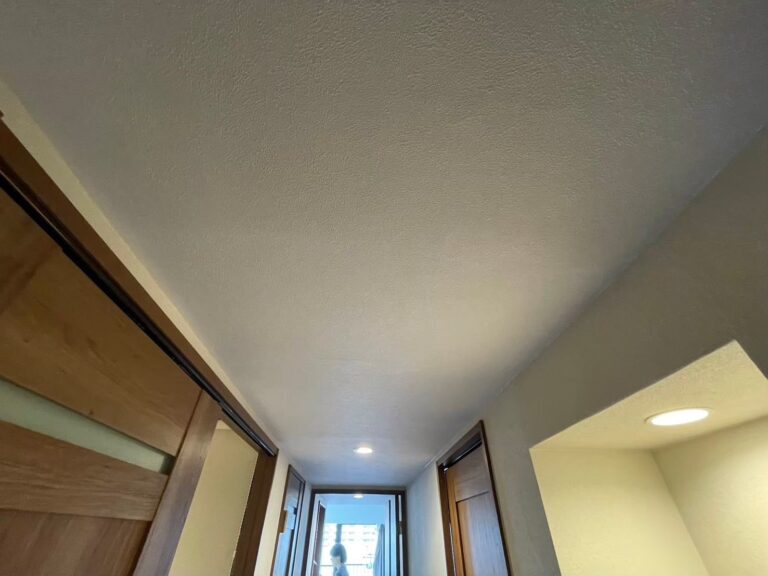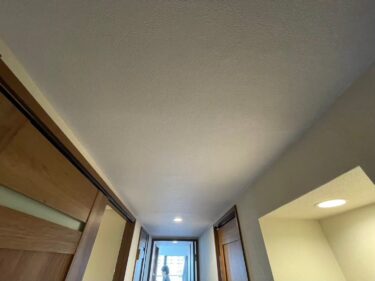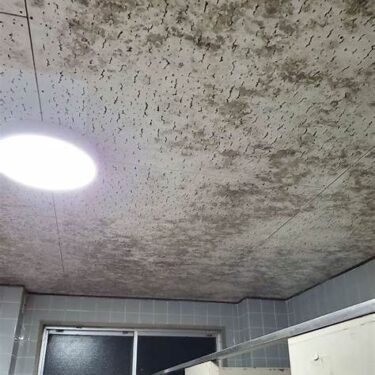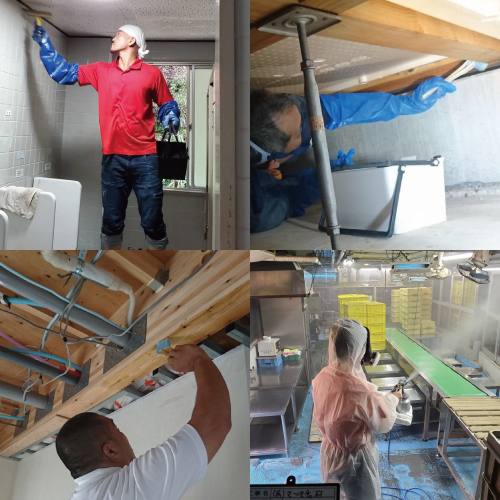Issue raised In housing exclusively for foreigners and government housing, the combination of Japan’s hot and humid climate and airtight housing structures has led to serious mold problems without people realizing it. What you will learn from this article This article provides a systematic and easy-to-understand explanation of the causes of mold, which frequently occurs in housing for foreigners, the health risks, efficient ventilation methods, and the professional MIST construction method®. Benefits of reading the article You will learn all the immediately applicable prevention and countermeasure methods that will help you maintain the asset value of your home and manage the health of your residents.
1. Why Mold Tends to Occur in Expat and Official Housing
Expat and official residences are often designed for comfort, but they may not fully adapt to Japan’s unique climate. Their high insulation and airtight construction, combined with residents’ typical lifestyle patterns, can easily trap humidity indoors and create an ideal environment for mold growth.
1.1 High Airtightness and Poor Moisture Ventilation
Expat homes and official residences often feature airtight and insulated structures to retain warmth and block noise. While effective in cold climates, in Japan’s humid environment, this design can prevent moisture from escaping. During the rainy season and humid summers, insufficient ventilation allows moisture to accumulate in walls, floors, and ceilings—promoting mold growth.
Furthermore, such airtight designs restrict natural airflow, so moisture from kitchens and bathrooms spreads throughout the home, accumulating in hidden spaces like closets and under tatami mats—places where mold can thrive unseen.
1.2 Inadequate Ventilation Habits in a High-Humidity Climate
Foreign residents may not immediately adapt to Japan’s climate-driven ventilation habits. In many Western countries, air conditioning and purifiers are preferred over natural ventilation. In Japan, this approach fails to remove the excess moisture effectively, allowing mold to flourish.
Unique architectural features in Japan—such as built-in closets, tatami floors, and insulated ceiling spaces—make proper humidity control challenging without local know-how. Without understanding these aspects, foreign residents may inadvertently encourage mold growth through everyday habits.
2. Health and Structural Impacts of Mold
Mold affects more than just aesthetics—it poses serious health risks and can compromise the structure of houses. Especially in expatriate housing, protecting tenant health and maintaining property value make mold control a critical concern.
2.1 Health Risks: Allergies, Asthma, and More
Mold spores float in the air and, when inhaled, can cause adverse health effects. Allergy-prone individuals, children, and the elderly are particularly at risk, developing conditions like asthma, skin irritation, and chronic fatigue. For foreign residents, illness in a new environment causes additional stress and lowers quality of life.
Harmful molds such as Trichoderma and Aspergillus can cause long-term health problems. Mold hidden in unseen areas often goes undiagnosed, leading to persistent symptoms and difficulty in pinpointing the cause until a professional evaluation is done.
2.2 Structural Damage and Asset Value Deterioration
Mold can discolor wallpaper, rot wood, and corrode metal fixtures. In high-end expat or official residences, even minor deterioration can significantly harm a property’s value. When these properties are rented out, mold-related complaints may lead to vacancies, repair costs, and lost income.
Deeper mold infestations require specialist removal, making early detection and prevention essential to minimize damage and cost.
3. Mold Inspection and the Importance of Professional Service
Visible mold is often just the tip of the iceberg—hidden colonies behind walls, beneath floors, and above ceilings pose unseen risks. In housing for expats, symptoms often develop unnoticed. Professional inspection is key to early identification and proper treatment.
3.1 On-site Diagnosis with Hygrometers and Infrared Cameras
The first step in mold control is accurately assessing moisture and temperature conditions on-site. Professionals use hygrometers and infrared thermography to detect condensation and damp areas without invasive procedures. This non-destructive approach is ideal for preserving the integrity of high-end expat and official housing.
By pinpointing hotspots for moisture accumulation, these technologies guide targeted interventions and help avoid unnecessary repairs, providing a cost-effective, efficient assessment method.
3.2 Why MIST Method® Is Effective for Removal
The MIST Method®—a proprietary technique developed by Kabibusters—uses a fine mist to deliver mold-killing agents deep into surfaces without harming materials. Unlike standard cleaners, MIST penetrates wood and porous materials to dissolve mold roots from within, offering long-lasting eradication.
Its biodegradable, low-toxicity formula makes it safe for occupants, including children and pets. The MIST Method® is trusted in environments such as schools and hospitals, meeting stringent safety standards and offering peace of mind to foreign tenants.
4. Types of Ventilation Systems and How to Choose the Right One
Managing indoor humidity requires proper daily ventilation. In expat housing, understanding and correctly using installed ventilation systems tailored to Japan’s humid climate is crucial for preventing mold.
4.1 Types of Ventilation: Type 1 to Type 3 and Selection Tips
There are three main types of home ventilation systems, each with unique benefits:
-
Type 1 ventilation uses mechanical fans for both air supply and exhaust, offering precise humidity and temperature control. It’s ideal for airtight homes like expat housing but comes with higher installation and maintenance costs.
-
Type 2 ventilation provides mechanical intake and natural exhaust. It’s commonly used in sterile environments but is not well-suited for residential buildings.
-
Type 3 ventilation relies on mechanical exhaust and natural intake. It is cost-effective and widely used in standard homes but requires careful humidity management.
Choosing the right system depends on the home’s structure, lifestyle of the residents, and budget. Proper system selection is key to effective long-term mold prevention.
4.2 Practical Ventilation Tips and Maintenance
Effective ventilation involves more than opening a window. Creating airflow across rooms—such as opening windows on opposite sides—helps remove moisture efficiently. Exhaust fans should be used regularly in moisture-prone areas like bathrooms and kitchens.
Ventilation systems must also be maintained. Clogged filters and dust buildup reduce airflow and may worsen humidity. Regular cleaning, ideally several times a year, ensures the system functions correctly. For complex systems, professional servicing is recommended.
5. Mold Control for Condensation-Prone Areas Like Underfloors and Closets
Hidden areas such as underfloors, closets, and attics are often overlooked but are major mold breeding grounds. These enclosed spaces trap humidity and suffer from condensation, making mold prevention here essential.
5.1 Dehumidification and Mold Protection for Underfloors and Closets
Underfloor spaces regulate moisture throughout the home. Moisture rises from the soil, and temperature differences can cause condensation. Using moisture barriers or increasing ventilation openings can reduce trapped humidity and prevent mold.
Closets, especially those against exterior walls, are also vulnerable to condensation. Lining them with moisture-absorbing sheets and desiccants, or placing slatted wooden boards at the bottom to enhance airflow, can be highly effective.
5.2 Condensation Around Ducts and in Attics: Solutions
Attics often house air ducts and exhaust pipes. Temperature differences between these ducts and the surrounding air lead to condensation and subsequent mold.
Insulating ducts can reduce this temperature gap. Installing attic fans also circulates air and prevents moisture accumulation. Regular inspections through ceiling hatches help catch early signs of mold or unusual odors.
6. DIY Daily Mold Prevention Techniques
Professional intervention is not always required—mold prevention can be practiced daily with simple routines. For foreign residents unfamiliar with Japan’s humidity, learning these habits is vital.
6.1 How to Use Dehumidifiers and Mold Inhibitors Effectively
Japan’s humid seasons demand effective dehumidification. Electric dehumidifiers help regulate room-wide humidity, ideally keeping it below 60% to prevent mold.
For confined spaces like closets, chemical desiccants or activated charcoal pouches can maintain dryness. These should be replaced regularly; using reminders on phones or calendars can help manage them.
6.2 Furniture Placement, Airflow, and Cleaning Habits
Furniture placement affects airflow. Pushing items directly against walls blocks ventilation and causes condensation. Leaving a small gap (a few centimeters) allows air to circulate and reduces mold risk.
Dust provides nutrients for mold, so frequent cleaning is crucial. In addition to vacuuming, wiping with damp cloths and alcohol sprays ensures surfaces are sanitized and resistant to mold colonization.
7. Key Points for Property Managers Handling Foreign Tenants
For expat housing, effective mold control includes not just building design, but also ongoing tenant support. Language and cultural barriers often complicate mold-related issues, highlighting the importance of proactive management.
7.1 Multilingual Communication and Cultural Sensitivity
At move-in, clear explanations about mold risks, humidity control, and ventilation practices should be provided—ideally in English or the tenant’s language. Visual guides and diagrams are also helpful.
Cultural accommodations, such as offering non-alcohol-based cleaning options for tenants with religious restrictions, demonstrate respect and build trust.
7.2 Importance of Quick Response, Regular Checks, and Aftercare
When mold problems arise, prompt and transparent action is essential. Delays or vague communication can lead to dissatisfaction or early termination of leases.
Regular inspections, open communication with tenants, and partnerships with mold specialists help maintain a healthy living environment and positive landlord-tenant relationships.
8. Long-Term Mold Control for Asset Protection in Luxury Housing
High-end expat housing requires a long-term approach to mold prevention. Regular inspections and preemptive maintenance are crucial to preserving property value and tenant satisfaction.
8.1 Scheduled Mold Inspections and Maintenance Plans
Yearly professional mold inspections—using tools like hygrometers and infrared cameras—can identify issues before they escalate. Seasonal self-checks by residents also help maintain vigilance.
When renovating or buying new property, incorporating mold prevention measures like moisture barriers and proper ventilation ensures long-term durability and health safety.
8.2 Advantages of the MIST Method® in Preventing Recurrence
The MIST Method® doesn’t just remove mold—it prevents it from coming back. By destroying mold at its root and applying a protective antifungal coating, it ensures long-term protection.
Safe for all building materials, it’s ideal for preserving delicate or expensive interior finishes. The MIST Method® supports both comfort and structural longevity, making it perfect for luxury housing.
9. Case Studies: Effective Mold Control in Expat Residences
Here are real-world examples showing how professional mold treatment significantly improved health and living conditions in expat housing.
9.1 Results from an Expat Residence in the Kansai Region
A Kansai-based expat housing complex had annual complaints about closet and wall mold. After applying the MIST Method®, no mold was detected the following year, and tenant satisfaction improved.
Additional support included multi-language instructions for dehumidifier use and ventilation tips. As a result, complaints decreased and vacancy periods were shortened, benefitting the management company.
9.2 Health Improvements in a Tokyo Expat Apartment
In a Tokyo luxury apartment, a child suffered allergic reactions traced to mold in the air conditioner and closet. After professional MIST treatment, symptoms subsided and the family reported a noticeable improvement in air quality.
Follow-up inspections and ongoing antifungal treatment created peace of mind and strengthened trust in property management.
10. Conclusion: Safe and Comfortable Living with Proper Mold Strategy
Japan’s climate, combined with expat housing structures and lifestyle habits, presents unique mold risks. However, with the right knowledge and professional support, a healthy and mold-free home is achievable.
10.1 Mold Prevention Ensures Comfort, Health, and Safety
Mold prevention is more than cleaning—it’s essential for maintaining tenant health, preserving property value, and protecting your investment. Foreign tenants benefit from clear communication, while management ensures reliability through proactive strategies.
10.2 Steps for Property Managers and Tenants
Immediate actions include encouraging airflow, using dehumidifiers, and regular cleaning. If mold is discovered, consulting a specialist like those using the MIST Method® is key.
By working together, managers and tenants can maintain safe, healthy, and comfortable homes.





